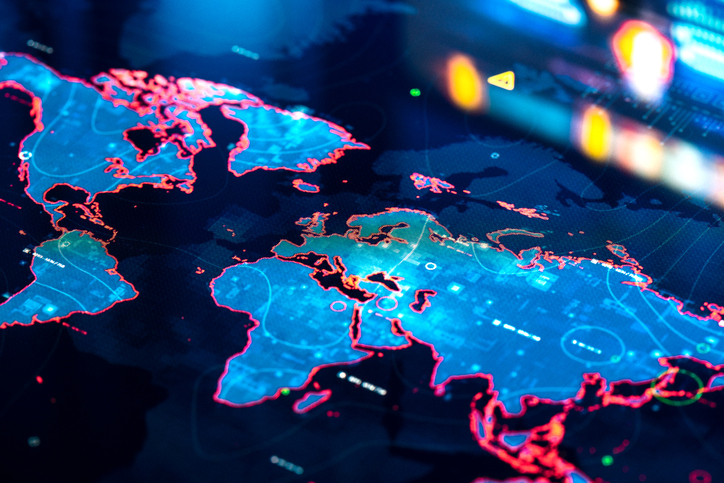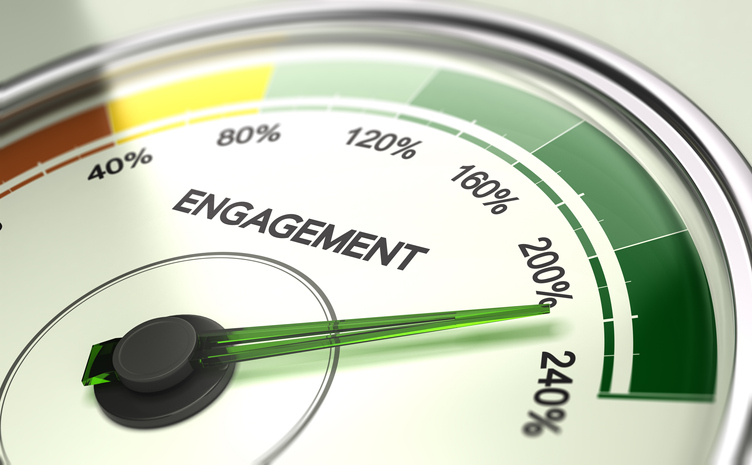Succeeding the show-stopping episode that gives the critically acclaimed series its namesake, Roman Roy, the youngest son of Succession‘s starring patriarch, Logan Roy, arrives at his newly-late father’s apartment dressed for business-as-usual, confessing to his siblings that he has “pre-grieved,” before diving straight back into work to handle a deal that may or may not be responsible for his father’s demise.
While the uber-wealthy, fascist-sympathizing, and sociopathic Roy sibling may be too “out there” for most viewers to relate to, how he handles—or rather, doesn‘t handle—distressing emotions such as grief in order to “carry on” may perhaps present a small isle on which people can find common ground with the character. And if there’s anything to be gained from this commonality—although “gained” might not be the best word in this case—it’s the warning that this is not a good way of dealing with these emotions.
Nevertheless, current survey findings suggest that this is perhaps how far too many of today’s workers are “coping”—if you could even call it that. Global rates of burnout are continuing to reach new highs even as the working world settles (to some extent, at least) into hybrid and remote work arrangements, while the rest of the world officially closes the door on the COVID-19 pandemic after the WHO announced an end to its global health emergency earlier this month.
To be fair, there is still plenty riding on the shoulder of the average worker nowadays. The cost of living remains high. Climate disasters are ubiquitous. Inflation, the rise of AI, and the layoffs both have inspired are raising doubts about job security—especially within sectors historically exempt from such concerns. The digital acceleration of not just work, but nearly every major facet of life—education, healthcare, communication, socialization—has us all oscillating between two very distinct realms or, better yet, lives. Everywhere one looks, it seems, is chaos and instability.
And that isn’t changing anytime soon.
In fact, many experts maintain that change is the only true constant organizations can rely on heading into the second half of 2023. Perhaps this has always been the case—it was Heraclitus who said, “the only constant in life is change”—but it’s especially true now. As Gabriella Rosen Kellerman, MD, a Harvard-trained physician specializing in behavioral and organizational change, digital health, wellbeing, and AI, and the author of Tomorrowmind: Thriving at Work with Resilience, Creativity, and Connection—Now and in an Uncertain Future, shared in a recent interview with Forbes: “Both the nature and pace of change around us are unlike anything our brains have experienced prior to this era. The change is constant, it’s volatile, and it’s complex, so we are uncertain what it will mean for us…All of which means that we end up with a constant sense of threat to our psychological stability—the feeling that the other shoe is about to drop.”
And this constant feeling that the other shoe is about to drop, so to speak, creates an ample amount of stress that people need to manage on a daily basis just to survive. The result? Like Roman, far too many people erroneously believe—or at least hope—that choking it down and repressing how they feel is an effective means of coping—hence the record-breaking rates of burnout, as everyone learns through trial and error that this strategy is not sustainable.
In order to effectively “carry on” in today’s predictably unpredictable world, then, people must learn how to tackle their stress head-on—and the other shoe or “shoes” that are sure to drop at various points along the way. While employers are certainly in large part responsible for helping their employees adapt to change, chaos, crises, or perhaps uncertainty, there is still an individual element to stress management and, moreover, reduction, that employees are ultimately responsible for: and that is, resilience.
What is Resilience?
According to the conservation of resources theory, the resource-base that a person builds up over the course of their lifetime can be divided into four categories: objects, conditions (e.g., job security, financial stability), energy (e.g., time, money), and psychological characteristics (e.g., self-esteem, optimism, self-efficacy)—the former three being made up of “external” resources, while the latter is made up of “internal” resources. According to the theory, a person experiences stress when there is a perceived threat of or actual loss of external resources—making one’s internal or psychological resources an important protective or mediating factor against stress. “Resilience” can perhaps be the name applied to this category of resources.
In fact, evolving from what was once understood as an “invulnerability” to stress, resilience has now come to be understood by experts as a state of being; an amalgam of different traits, behaviors, and coping strategies that anyone can develop—no genetic predispositions necessary. Such qualities include:
- Trust and optimism – the tendency to foresee positive outcomes or focus on the best-case scenario rather than the worst; to see oneself as a survivor as opposed to a passive victim of circumstance; to know that things will get better.
- Self-awareness and compassion – the ability to take accountability for one’s actions or attitudes; to recognize the level of control or influence that one has over a given situation; the ability to afford oneself kindness, forgiveness, patience and understanding in the face of difficult decisions or distressing emotions.
- Emotional intelligence – like self-awareness, the ability to be aware of one’s emotions; to recognize that one’s emotional response to a circumstance is not what’s really happening; the ability to recognize that such emotions are temporary, to pause and reappraise such reactions before taking action, and to remain calm and composed in the face of stress.
- Perserverance and self-efficacy – the ability to resist giving up; the belief in oneself and one’s abilities—specifically the belief that one can successfully cope; and the means of proactively seeking solutions.
- Vulnerability and communication – the ability to seek help and access social support when necessary; the ability to clearly communicate one’s feelings, hardships, or needs to others; the ability to resolve conflicts, solve problems, and de-escalate tense situations by talking things out and demonstrating concern and compassion when communicating with others.
- Mindfulness – the awareness and acceptance of the present state of things; the means of avoiding past woes and the uncertainty of the future as brought about by the temporary present; the ability to assess one’s current situation with a clear, rational, and non-judgmental mind, pinpointing available resources and potential courses of action that can be taken to cope with or resolve stress or conflict.
In essence, resilience is the ability to “bounce back” or “to come back stronger than ever” in the face of challenges; the ability to not only adapt but to thrive in spite of change. It’s a way of looking beyond one’s initial fight, flight, or freeze response toward a path of least resistance: growth.
Contrary to what was initially theorized, resilient people are not necessarily immune to distress—they experience it the same as anyone else. But rather than avoiding such feelings (the ‘flight’ response), giving into them (the ‘freeze’ response), or trying to fight them, people who are resilient aim to strike a balance between their impulses and their options: accepting what’s out of their control, changing what is in their control, “living one day at a time” and placing trust in themselves, their coping skills, and the resources at their disposal.
How to Cultivate Resilience
There’s a lot working against individuals when it comes to cultivating resilience. Between the “always on” culture that has been exacerbated by the digitalization of work, the hyper-competitive nature of the American work environment, and just the general sense of urgency that people feel to be constantly networking and socializing amidst endless conversation on social media, everyone feels as if they’re on a time crunch these days; we’re all on edge, and we’re fighting to stay afloat.
How then—as the clock seems to tick faster and faster—can one find the time, or rather, the opportunity, to slow down; to breathe, re-center themselves, and focus on actionable, productive solutions to the stress they may be experiencing in the present moment?
Thankfully, there are plenty of simple and time-efficient strategies that people can adopt into their daily lives to build resilience, no matter how busy their schedule. Chief among them include: (1) nurturing one’s social network, (2) making sure that one’s physical needs are met, and (3) practicing mindfulness.
Social Support
Maintaining strong and healthy relationships is a source of stress in its own right—especially now as everyone has increased access to each other, for better or worse. But research shows that touting a strong social network is a major protective factor against stress—and an even bigger protective factor in times of crisis, chaos, or uncertainty—as doing so helps one to recognize that they are not alone, that help is readily available, that their situation is temporary, and that things will get better.
While family looks different for everyone, as some may have severed ties with their biological family, live far away from their family, or have a toxic relationship with their family—the good news is that acquaintances are easy to make, easy to find, and can be just as helpful as a means of building resilience and managing stress. In fact, studies show that even just ten seconds of kind words can foster a sense of connection in both the recipient and benefactor and having that perceptible connection with others in times of high stress or crisis can help people to keep calm, think clearly and rationally, and take proactive steps toward addressing their stress (i.e., seeking help).
Holistic Health
While changing bad habits can take a lot of effort, it’s important to dispel the notion that self-care is a time-consuming luxury that only so many can afford. On the contrary, self-care is simply optimizing the steps a person already takes on a day-to-day basis to fulfill their basic health needs, i.e., getting plenty of sleep, eating a healthy and satiating diet, staying physically active, and maintaining a strong mind-body connection.
While the sense of time scarcity or urgency that people feel on a daily basis can inspire some to stay up late, get up early, rely on microwaved meals and put their physical health on the backburner, studies prove that, while these tactics may free up time and alleviate one’s perceived stress levels in the short-term, in the long-run, they only exacerbate stress and enhance already stressful situations. To make sound decisions, one needs to have a clear mind; to have a clear mind, one needs to be sufficiently fueled.
Thus, to improve resilience, one must prioritize their holistic health and wellbeing by:
Mindfulness
Perhaps one of the most highly recommended ways to cultivate resilience is by taking advantage of mindfulness-based interventions—like those that center around the mind-body connection. A plethora of research has found that mindfulness, the practice of bringing one‘s attention to the present moment—the here and now—is a crucial resource for rising to the occasion and overcoming obstacles, responsible for:
- Helping people to become more aware but less worried about what’s going on within and around them—increasing their tolerance and bandwidth to handle stress.
- Enabling people to assess a situation in a non-reactive and non-judgmental way—avoiding impulsive mistakes.
- Allowing people to adapt to challenges or changes as they unfold; to be more flexible.
- Empowering people to confront challenges with full confidence, a positive outlook on the future and their ability to shape it, and a healthy sense of self-worth.
There are plenty of methods through which people can practice mindfulness—ranging from more physical activity like yoga, tai chi, and mindful walking, to relaxation techniques such as progressive muscle relaxation, diaphragmatic breathing exercises, and meditation, to more cognitive practices including journaling and expressive writing, cognitive behavioral therapy (CBT), practicing gratitude, and more.
No matter what techniques are employed, practicing mindfulness ultimately comes down to using sensory experiences or homing in on individual thoughts, movements, or bodily sensations to pull oneself back down to earth, so to speak—in other words, ground oneself—so that one can get a better sense of what is actually going on versus what their emotional response is trying to convince them is happening, so that they might take a rational course of action, rather than an emotional one, in response.
Resilience in Action
If Roman had taken the time to practice mindfulness, he might have been able to actually process his dad’s passing and avoid the debilitating tsunami of grief that he was inevitably hit with in the week that followed. But outside the world of Succession, signs that someone has successfully taken the steps to build resilience may include:
- Remaining cool, calm, and collected during a crisis.
- Becoming a beacon of support and guidepost for others during a crisis.
- Proactively seeking help when needed—free from pride, shame, or timidity.
- Accepting and embracing criticism from others—perceiving them as opportunities for growth.
- Persevering in the face of failures, mistakes, or setbacks, determined to see projects through.
- Effectively resolving problems via flexible coping strategies, sufficient communication and collaboration skills, and unwavering determination.
No matter what the circumstance or context is, resilience is all about learning how to dance through a storm; to move through life’s challenges unbothered, recognizing that—like storms—everything that’s wrong shall come to pass. By placing trust in oneself and those around them, demonstrating a willingness to continuously learn, grow, and adapt, and practicing genuine acceptance of all that is happening—both the good and the bad—people can take comfort in the fact that they will be able to survive—and thrive—through just about anything.



































